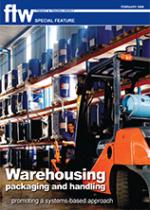The advantages are:
• Degree of control – the owner has direct
control of inventory with associated
cost control;
• With more control, there is greater
flexibility of designing and operating
the warehouse to suit the needs of its
customers and the characteristics of the
products;
• Less costly in the long-term – where
the operating cost can be 15%-to-
25% lower if the company achieves
sufficient throughput or utilisation;
• Better use of human resources;
• Tax benefits – with depreciation
allowances on buildings and equipment
reducing tax payable;
Its disadvantages to the user are:
• Lack of flexibility;
• High opportunity cost (high risk);
• High start-up cost:
Firms have to generate enough
capital to build or buy a warehouse.
A warehouse is often a long, risky
investment. Moreover, there is cost
of hiring and training of employees,
and the purchase of material handling
equipment.
The high cost involved may force the
company to seriously consider public
warehousing as a better option.
FTW1218SD
[Sources: Douglas M. Lambert, Fundamentals of
Logistics Management, McGraw/Hill Publication
(1998); Ernst F. Bolten, Managing Time and
Space in the modern warehouse, New York
(1997); Jenkins, Creed H., Complete guide to
modern warehouse management, Prentice Hall
(1990); Ken Ackerman, Warehousing profitably,
Ackerman’s publication (1994); Ken Ackerman,
Practical Handbook of Warehousing, London:
Chapman & Hall (1997).]

